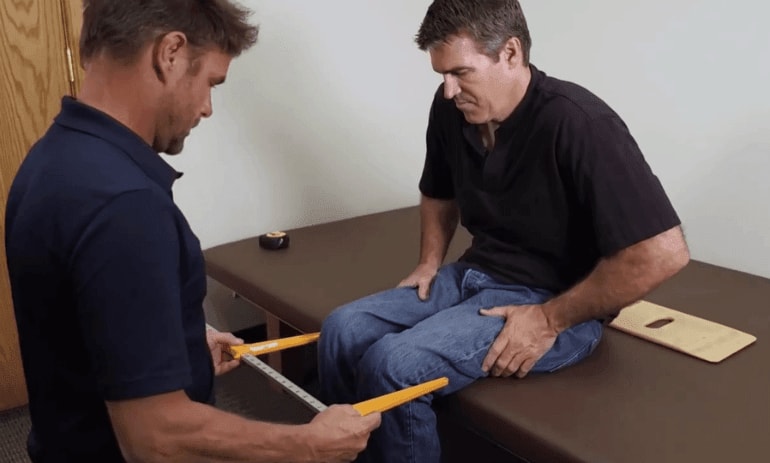Share:
Take it offline!
This Education in Motion resource is also available as a printable PDF.
Download PDF
Maintaining good posture in a wheelchair will help you improve your mobility and decrease your risk of long-term health issues. It’s important to remember that the definition for ‘correct posture’ is dependent on the wheelchair user in question. For instance, people with spinal disabilities often cannot sit with a conventional posture, and must thereby maintain the correct posture for their abilities and condition.
Why is good posture important?
Maintaining good posture helps relieve the amount of pressure your body is being subjected to. Once you start correcting poor posture, you’ll soon notice a positive effect on your neck, thighs, buttocks and spine.
Achieving and maintaining good posture is especially important for wheelchair users. One of the biggest benefits of good posture is that it helps optimise your mobility, reducing the amount of energy you need for propelling your wheelchair. Proper seated posture also helps reduce your risk of injuring your shoulder muscles and tendons.

To keep your posture healthy, you should try reaching for your wheelchair’s push-rims while maintaining a complete movement of your arm. To do this, start at the rear of the wheel and continue to follow the push-rim until the wheel makes a full revolution. If you are sliding and slouching in your wheelchair, this movement will seem unnatural and uncomfortable, shortening your arm’s movement and reducing efficiency of the motion.
What you should keep in mind
One of the most important things you should keep in mind when analysing your posture is the biomechanical features of your wheelchair. Biomechanical factors have a broad influence on your wheelchair’s functionality. These factors – which include the size of the wheels, height of the wheels, position of the wheels, and angle/distance between wheel axes – can be designed and adjusted to better suit your disability and requirements for your wheelchair.
Other important features you should adjust and account for include:
- Footrest
- Armrest
- Seat height
- Backrest height
Seat
The seat is one of the parts of your wheelchair that always remains in contact with your body during use. This means that the stability and position of your chair is of utmost importance when you are trying to maintain good posture. A properly fitted seat should optimise wheelchair function and propulsion while evenly distributing your weight.
To avoid pressure sores, your chair should be designed to distribute your weight in as wide an area as possible. Here are the consequences of poorly fitted chairs:
- Chairs that are too wide cause the user to sit in a non-symmetrical posture.
- Narrow seats create discomfort, leading to pressure sores and slouching.
- Seats that are too short force irregular amounts of pressure on your buttocks, creating muscle pain and discomfort.
- Seats that are too long cause the user to slide forward during use, placing too much pressure on the leg and knee.
Experts believe that you can find the optimal length of your seat by sliding your finger between your knee and the seat. If you can fit two fingers in this area, the seat is the right length.
If you think that your seat’s base is uncomfortable, try placing an anatomical cushion at the seat’s lower rear.

Footrest
To achieve good posture, you will need to adjust your footrest to a comfortable angle for your knees and ankles. Although the ideal angle is 90 degrees, this may not be practical for the wheelchair user. In fact, a footrest at a 90-degree angle could actually impede the rotation of the front wheels.
Backrest height
The backrest is used to stabilise the user’s upper body. You will need to adjust the backrest depending on your ability and comfort requirements.
Armrest
Despite what you may think, the main purpose of the armrest is to help your back and neck rest and relax. Experts advise wheelchair users to support their elbows at a 90-degree angle, stabilising your seated position and reducing stress on your back, neck and shoulders.

Which measurements should you take to configure, design and purchase a wheelchair
In order to select an appropriate size wheelchair, it’s imperative that you are using correct measurements. To prevent any missteps, take the time to secure the services an experienced therapist or equipment supplier. This professional will have the skills to evaluate your specific requirements, helping you design and fit a wheelchair that maximises mobility and independence.
Here are some of the basic aspects to consider:
- Take body measurements while you are sitting on a hard surface.
- While the measurements are being taken, the user should be adopting the same posture and position they use while seated in their wheelchair.
- Take note of the additional space needed for the clothing.
- Increase comfort and functionality by using accurate measuring instruments, thereby reducing random and systematic error.
- Please see attached document if you need full instructions on body measurements
Here at Sunrise Medical, we know the value of having a professional technician on hand to help take accurate measurements. To make the most of your wheelchair, take the time to visit a clinician or supplier that is experienced in seating.
If you need ideas on picking the right wheelchair, take a look through our wide range of wheelchair models. Depending on your needs, you can choose from a diverse collection of manual wheelchairs and powered wheelchairs, ensuring that you get the perfect wheelchair for you.